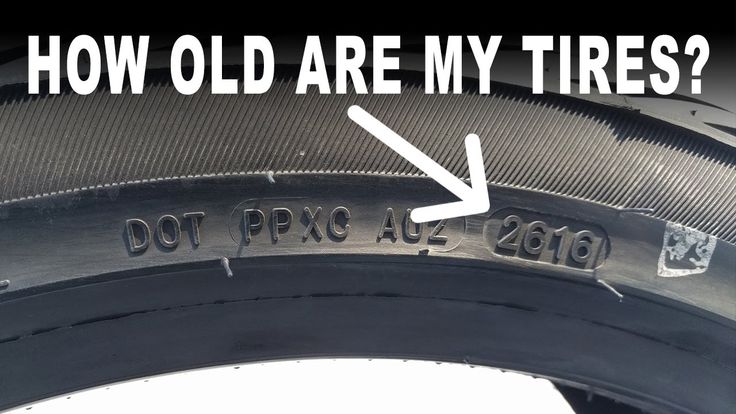Tires carry a wealth of information on their sidewalls; unfortunately, it's all in code. Most of it is of no concern to many owners, but it can be valuable for those who want to know the seasons for which their tires are intended, those who plan to replace their tires, or new-car buyers who are given a choice of sizes and types.
Apart from the name of the manufacturer and the tire model -- such as Bridgestone Turanza EL 400 -- the following marking, from a Honda Civic, is likely the most prominent.
P simply means this is a passenger-car tire. Other codes include T (temporary, as in a spare tire), LT (light truck) and C (commercial). Not all tires include this letter.
205 (the first number) is the tire's width in millimeters.
55 (the number following the slash) is a measure of the tire's profile -- the height of its sidewall relative to its width -- expressed as the sidewall's aspect ratio in a percentage. In this example, the sidewall height is 55 percent of the tire's width, which is 205 mm. The number is known as the tire's series; a sporty tire with shorter sidewalls would be considered a lower-series tire. Off-road tires tend to be higher-series, designed to absorb the impact from rough surfaces.
R means it is a radial tire, which describes the way the underlying layers, or plies, are laid out. The radial design is now so pervasive that the R designation is superfluous -- though it conveniently separates the series and diameter numbers. On some performance tires, an additional letter precedes the R: A ZR designation means the tire's maximum speed rating is above 149 mph (see the key below). This is another unnecessary character; all tires provide a letter designation in the service description, explained below. It follows the size code, sometimes in smaller type.
Speed Ratings Letter / Max. MP
N/87
P/93
Q/99
R/106
S/112
T/118
U/124
H/130
V/149
W/168
Y/186
Z*150
*Z is an open-ended rating that means the tire's maximum speed is, at minimum, 150 mph.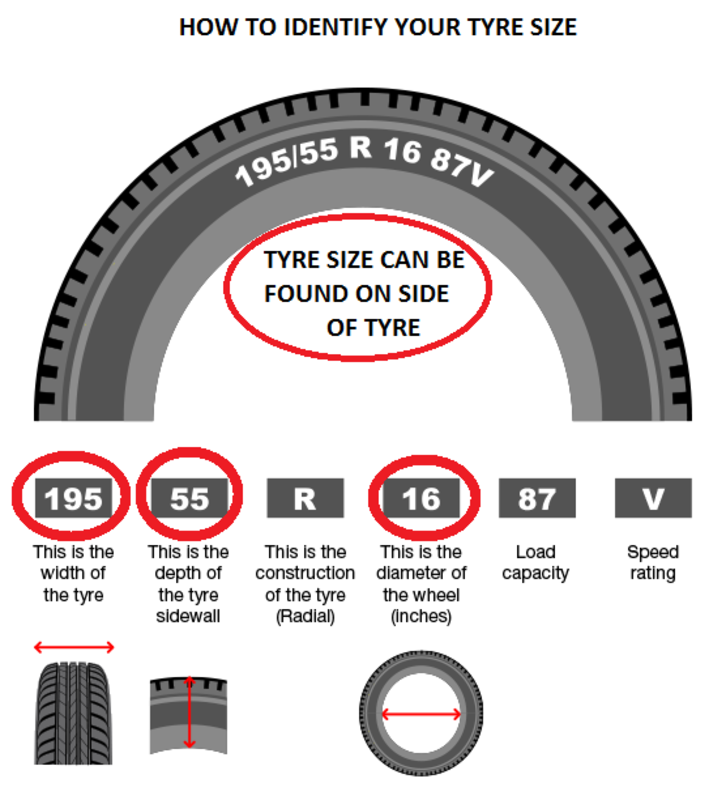
16 (the last number) is the diameter, in inches, of the rim on which the tire fits.
89H is the service description. Separated from the main code, it represents the tire's load and speed ratings. This tire's 89 load index represents 1,279 pounds (per tire), and the speed rating of H represents 130 mph. The speed rating is less important in the U.S., where the speed limits are below even the lowest listed rating (N, or 87 mph). In other countries -- and our own, when no one's looking -- people are known to drive 100 mph and above.
M+S stands for mud and snow, indicating that this is an all-season tire. It's not the clearest of the specs, because there aren't other designations for summer and winter tires: Summer tires simply lack the M+S, and winter tires are labeled M+S and add an icon of a mountain plastered with a giant snowflake. (S, AS and W would be better, but what can you do?) Uniform Tire Quality Grade The following three codes, which appear on the sidewall, typically closer to the tire's tread, are part of the National Highway Traffic Safety Administration's uniform tire-quality grading system.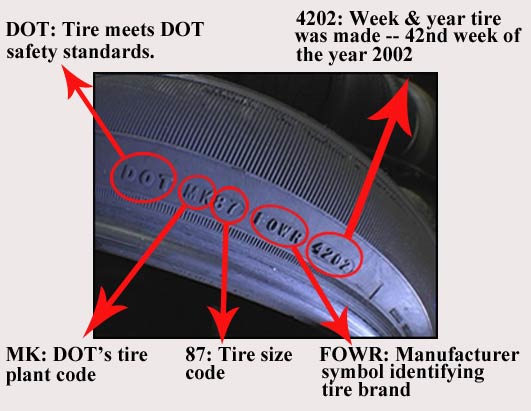 Unfortunately, it's not all that uniform: It appears on all-season and summer tires, but not on snow tires, light-truck tires or spares. Further, the rating comes from the manufacturers, whose results might be consistent from one of their products to the next, but whose universality is questionable.
Unfortunately, it's not all that uniform: It appears on all-season and summer tires, but not on snow tires, light-truck tires or spares. Further, the rating comes from the manufacturers, whose results might be consistent from one of their products to the next, but whose universality is questionable.
TREADWEAR 300 TRACTION A TEMPERATURE A
Treadwear: Uses numbers from 100 to about 700. Theoretically, a tire rated 150 would have a 50 percent longer lifespan than a tire rated 100 if used in the same conditions -- driver, vehicle and roads. Soft summer tires tend to have lower treadwear ratings than all-season tires. Winter tires aren't rated, but their soft compounds make for quick wear when driven off snow and ice.
The uniform tire quality grade is located on the sidewall near the tread. Traction: Uses AA, A, B and C, with AA being the best traction on a wet road. The traction measured is straight-line acceleration and braking. This is not a measure of cornering grip or performance on dry surfaces.
Temperature: Uses letter grades A, B and C, with A representing the best resistance to heat buildup and C the least. The friction of a tire on pavement generates heat, and too much heat degrades high-speed performance and can accelerate aging and failure. C is the lowest permissible rating. Temperature ratings correlate to speed, with C representing 85-100 mph, B representing 100-115 mph, and A covering speeds above 115 mph.
Notes: Arguably, the temperature rating -- like the "Z" speed rating -- is redundant, because it's tied to a speed rating that's presented with greater specificity in the service description. However, it's wise not to buy replacement tires with a rating lower than the originals', and it's a lot easier to match one of three temp ratings than it would be the 11 different speed ratings in the service description.
It's impossible to translate treadwear ratings to miles because where and how people drive plays a critical role. That said, if you think your tires wear out too quickly, consider a higher rating. The same goes for traction, but understand that changes in one characteristic typically change others, be it treadwear, noise, ride quality or price.
The same goes for traction, but understand that changes in one characteristic typically change others, be it treadwear, noise, ride quality or price.
Tire Age/Date of Manufacture
Unlike the other, more-prominent specs, the Department of Transportation's Tire Identification Number is of interest to tire owners and buyers alike -- mainly because it includes the week and year of the tire's manufacture, and thus its age. Tire age, not just wear, has become a safety concern.
Found close to the rim, the TIN consists of a series of 10-12 letters and numbers that -- like a vehicle identification number -- are of little use to a consumer. But the last four numbers represent the birth week and year of any tire built since 2000.
DOT h35R YC24 4305
The tire above was manufactured in the 43rd week of 2005. Tires built before 2000 used a three-digit code, where the year was reduced to a single digit. If the tire above were from 1997 rather than 2005, its code would be 437. Would 437 also be the code for a tire made in the 43rd week of 1987? Unfortunately, yes, it would -- and that's why four digits are now used.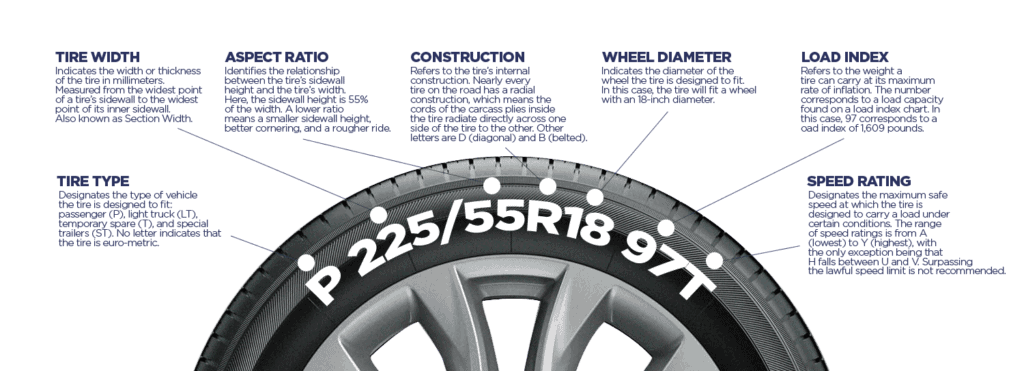
Recently, the effect of tire age on safety has become a concern. Unfortunately, climates and how well a tire is cared for affect its aging, so there are no universal rules. Most tires wear out before age becomes an issue, but some automakers -- mainly German ones -- recommend replacement after six years in service, regardless of wear. Most automakers agree that 10 years is the maximum safe lifespan for any tire, including a spare that has never been used. When buying new tires, it's wise to check their birth date. Treat them like milk: Your family might finish a gallon before its expiration date, but then again, it might not. Why take the chance? For the same money, you should get the freshest milk -- or tires -- you can find. You might wear the tires out long before they're due for retirement, but why buy a set whose clock is already ticking?
What's Not on the Sidewall: The Proper Inflation Pressure
If you look closely enough, you'll probably find a maximum-pressure figure on a tire's sidewall. Don't do it. This is not the recommended pressure for you to use; it's the maximum rating for the tire, irrespective of the vehicle on which it's used. Invariably, it's dramatically higher than the pressure you should be using.
Don't do it. This is not the recommended pressure for you to use; it's the maximum rating for the tire, irrespective of the vehicle on which it's used. Invariably, it's dramatically higher than the pressure you should be using.
New cars present the proper inflation pressures on the driver's doorjamb, as required by law. For more information, see Tire Maintenance.
(C) 2013, Cars.com; distributed by Tribune Media Services
If you have recently bought a vehicle, or you have been driving your car or truck for a while but haven’t thought to check out what kind of tires you have, you may be wondering how to figure out what your vehicle is fitted with.
There are many different kinds of tires, and each has been designed for a different driving purpose, and for differing conditions. One main differentiating factor in tire type is what weather conditions it has been designed for – winter, summer, or all seasons.
If you are unsure what kind of tires are on your vehicle, then read on, as we have some quick and easy ways to help you identify them different types of tires, which is especially important if you are planning on buying new ones.
Fairly easy to identify, winter tires always have a pictogram with a snowflake and mountains on their sidewall. This symbol - called 3PMSF for Three Peak Mountain Snowflake - means that the tire meets international standards for use in harsh winter conditions, making it a safe and reliable tire for anyone who drives in snowy, slippery, and extremely cold conditions. The tread depth of a winter tire is always at least 4 mm, to ensure a longer life in severe winter conditions.
If you are curious about the optimum outdoor temperature range for winter tires, generally, this value is related directly to the rubber compounds used in their manufacturing. If they bear the three-peaked mountain and snowflake logo, it means these winter tires have been tested in winter conditions under 40 degrees Fahrenheit. While this might seem extreme, temperatures this cold do occur in parts of Canada from time to time. Regular winter tires marked with the M+S logo should be installed when the weather dips under 7 °C, or sooner if snow and ice start falling in your region.
While this might seem extreme, temperatures this cold do occur in parts of Canada from time to time. Regular winter tires marked with the M+S logo should be installed when the weather dips under 7 °C, or sooner if snow and ice start falling in your region.
If you are wondering if you have summer tires installed on your vehicle, there are a few features you can used to identify them. Summer tires are not quite as common as say, all-season tires, and tend to be found installed on high performance vehicles such as sports cars, or cars used solely during the summer months, such as vintage cars. Other features of summer tires include:
As you have read, summer tires are best suited for warm weather driving, but you may have questions about what the ideal summer tires temperature range might be. The suggested temperature range for summer tires is when the weather hits above 45 °F or 7 degrees Celsius. In most parts of Canada, this means that summer tires are best installed near the end of the spring season, or at the beginning of summer – and are taken off and replaced with your all-season tires at the beginning of fall, still depending, of course, on where you live.
The suggested temperature range for summer tires is when the weather hits above 45 °F or 7 degrees Celsius. In most parts of Canada, this means that summer tires are best installed near the end of the spring season, or at the beginning of summer – and are taken off and replaced with your all-season tires at the beginning of fall, still depending, of course, on where you live.
One of the most popular types of tires is the all-season tire. If you are wondering if those are the ones equipped on your vehicle, then here are a few features to look for:
Because they are called all season, these types of tires can be used all year round, as long as you are driving in average conditions.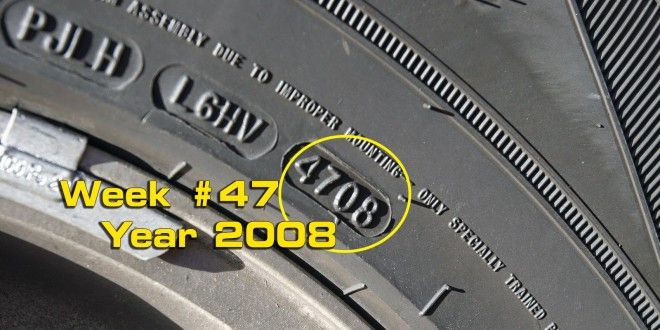 However, if you want to know the temperature range for all-season tires, you should install them when the temperature is between 30 °F and around the freezing mark in Canada of 0 degrees Celsius. These tires will perform well during the winter months, but if you live in a region where you get a lot of snow and ice, or you travel on less well-kept roadways, then you may want to think of putting winter tires on your vehicle when the snowy season begins.
However, if you want to know the temperature range for all-season tires, you should install them when the temperature is between 30 °F and around the freezing mark in Canada of 0 degrees Celsius. These tires will perform well during the winter months, but if you live in a region where you get a lot of snow and ice, or you travel on less well-kept roadways, then you may want to think of putting winter tires on your vehicle when the snowy season begins.
Of course, if you have any questions about what kind of tires to install on your vehicle, or need additional help determining what kind of tires you currently have on your car or truck, it’s best to reach out to a team of tire experts, like the people at blackcircles.ca. Our team is available to answer all your questions on tires, and we can also help find the perfect set of new tires at the best prices in Canada. Just reach out to us by email, phone or use our online chat, and we will be happy to help you out.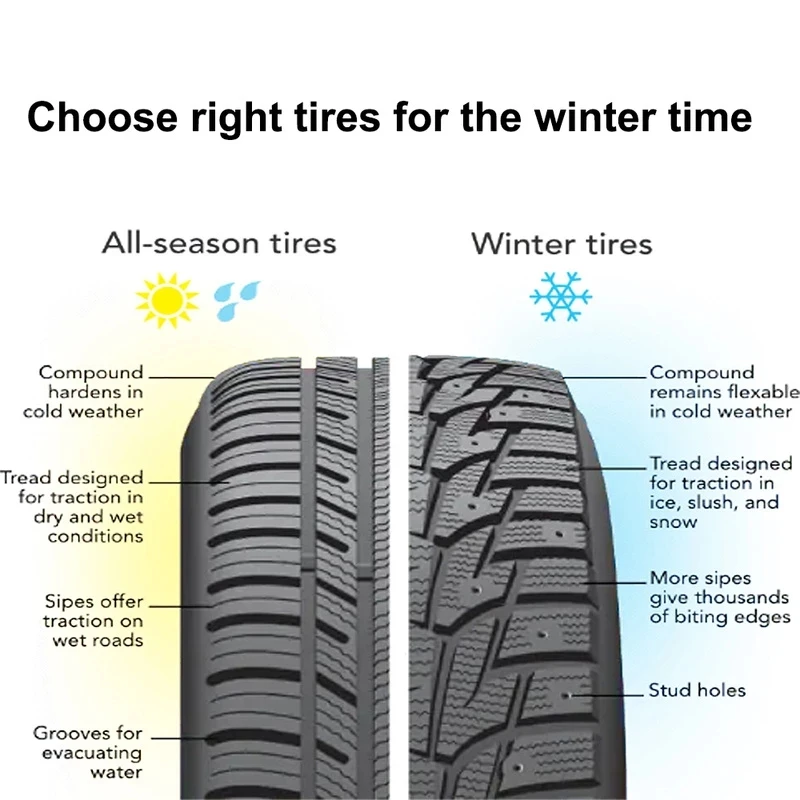
discover our best 2021 summer and all season tires
The right choice of car wheels will allow you to move in comfort and safety. Rubber must strictly correspond to the season, road and temperature conditions. Incorrect use of wheels significantly increases the braking distance, the service life of the wheels, and the economy of movement. It is not surprising that manufacturers produce summer and winter tires, and today universal all-season tires are becoming especially popular. It is worth figuring out how to distinguish winter tires from summer tires, and for this you need to study the main characteristics of the wheels.
Tires for the cold season are distinguished by a carved and deep tread pattern, which can look like a familiar “herringbone” or chaotic depressions.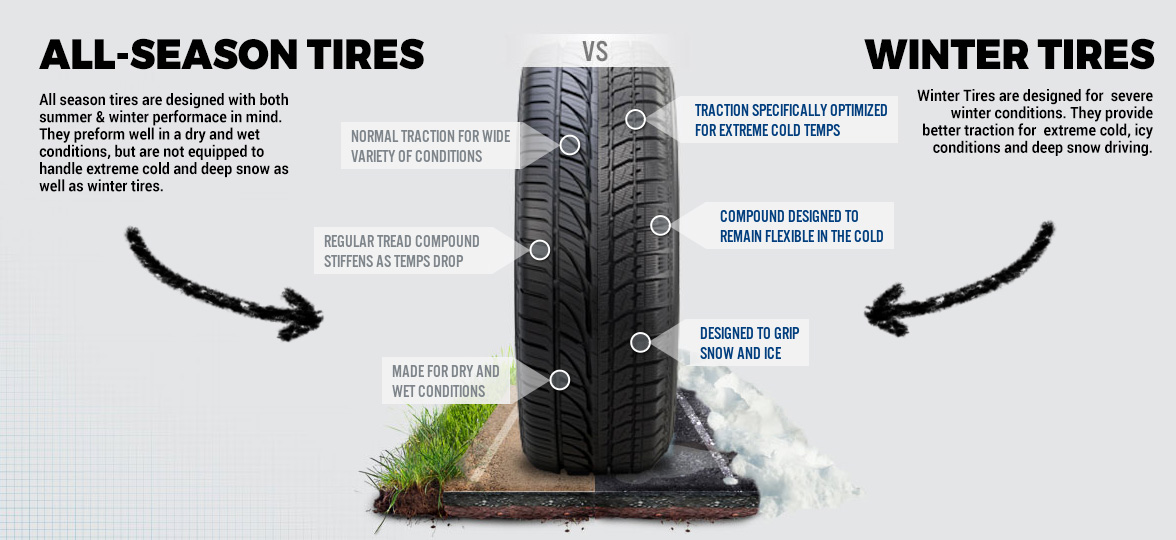 Lamellas or zigzag cuts on the tread are the virtues of winter tires. It is they, as well as checkers and deep grooves, that provide effective removal of snow and water, increase the coefficient of adhesion on the road. There are two main types of tread pattern for winter:
Lamellas or zigzag cuts on the tread are the virtues of winter tires. It is they, as well as checkers and deep grooves, that provide effective removal of snow and water, increase the coefficient of adhesion on the road. There are two main types of tread pattern for winter:
Scandinavian - the pattern is sparse, the checkers are staggered and look like rhombuses, there is a noticeable distance between the elements of the pattern;
European - the pattern is located diagonally, the network of channels is well developed, powerful lugs are located on the periphery of the tread, there are a large number of thin slots - lamellas on the surface.
Summer tires have shallow tread grooves designed to expel water, the number of sipes is kept to a minimum. There is no micro-pattern in the wheels for summer.
Spikes are another criterion of seasonality. There are no summer studded tires, and winter studding should be chosen carefully. The studs are designed for driving on ice, providing good grip where other wheels slip. They should not be located in two rows on the sides of the tires - this will not shorten the braking distance at all, and the spikes themselves will fly out after several trips. High-quality studding suggests an asymmetric or snake-like arrangement of spikes.
They should not be located in two rows on the sides of the tires - this will not shorten the braking distance at all, and the spikes themselves will fly out after several trips. High-quality studding suggests an asymmetric or snake-like arrangement of spikes.
In addition, rubber for winter tires is softer and more elastic, it is visible to the naked eye for an experienced driver. This is easy to determine even by touch, since there is an order of magnitude more rubber in the rubber compound, which allows the tires not to freeze at low temperatures. Summer tires, on the contrary, are more elastic - there is less rubber in them, because in the heat soft tires “float” and do not hold the road. For safety reasons, summer tires are resistant to wear and high temperatures.
During operation, winter tires warm up and therefore do not lose their elasticity and softness. On winter snowy or icy roads, this provides maximum grip, effectively shortening the braking distance.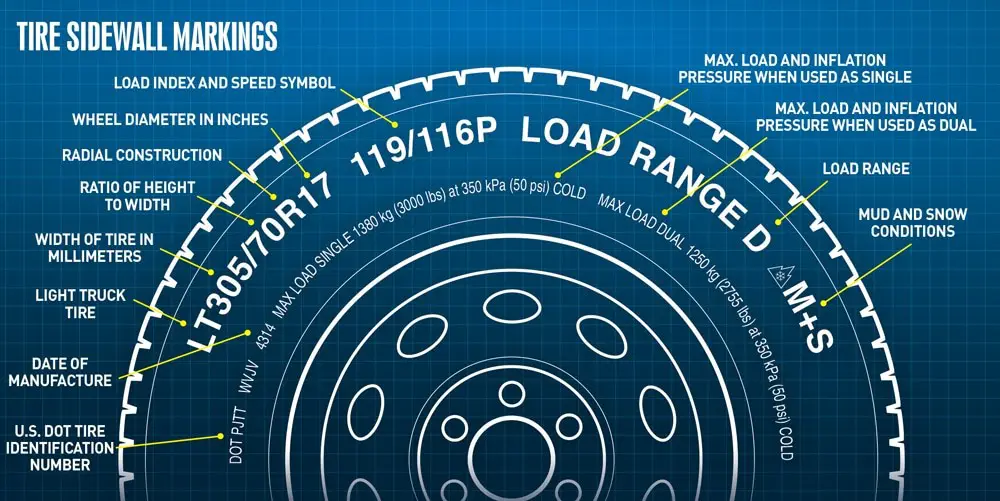 Summer tires cool down at speed, becoming more shaped and firm.
Summer tires cool down at speed, becoming more shaped and firm.
An important quality of rubber, which makes it possible to distinguish between summer and winter tires, is the maximum permissible speed. In winter, even on the highest quality roads, it is not recommended to drive faster than 140 km / h; summer tires are more democratic in this matter.
Despite everything, even a novice driver will be able to determine the seasonality of tires by special designations used by manufacturers. The letters M + S (mud and snow), as well as W (Winter - winter) guarantee comfortable driving in snow and mud, in some cases MS is the marking of all-season tires. Also, an image of the sun (for summer) and snowflakes (for winter wheels) is applied to the side surface of the wheels. It is important to know that there is no special letter designation for summer tires.
Every driver should know the designations on tires.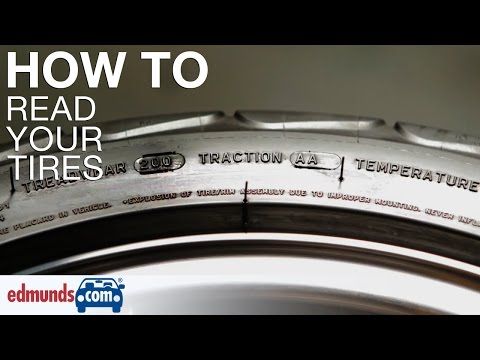 The ability to decipher the marking will help you choose the best set of winter or summer tires, which will not only save on tires, but also ensure the most efficient control in any situation.
The ability to decipher the marking will help you choose the best set of winter or summer tires, which will not only save on tires, but also ensure the most efficient control in any situation.
Below we will look at what designations are present on car tires, we will understand the classification of rubber and the difference between seasonal shoe sets, and also understand what the markings on the sidewalls of products mean.
Content:
Almost all tire manufacturers offer winter tires. Such products have a developed tread pattern that provides better grip, and soft grades of rubber are used for its manufacture. This allows the set to maintain elasticity at severe negative temperatures.
In turn, winter tires are divided into studded or non-studded. The presence of metal spikes in the tread allows you to more confidently bite into the ice crust and densely packed snow. However, this design harms the asphalt surface, so it is prohibited in a number of European countries.
However, this design harms the asphalt surface, so it is prohibited in a number of European countries.
Therefore, it is better to give preference to non-studded tires or Velcro. The presence of spikes in the tread is justified only when operating off-road or in heavily polluted areas. If a car drives in the city and cold asphalt in winter, then such winter tires provide better handling and traction.
Winter tires themselves are divided into Scandinavian or European, depending on the type of tread. The European tire model is similar to the rain tire and has an extensive network of symmetrical lugs. Such a kit feels better on cold pavement in rain or slush.
Scandinavian tire has a pattern and asymmetric parts of the tread, where the figures alternate in a checkerboard pattern (see photo). Thanks to this, a car on winter tires provides effective traction on snow-covered roads and is well suited for off-road travel.
The most popular manufacturers of winter tires are:

All winter sets are marked with the following snowflake icon or the letter W. All-season wheels are marked with the letters M+S - Mud+Snow. The following indicators must be present in the marking of winter tires. All manufacturers indicate the size of the wheel, the diameter of the tire, according to the European or American standard.
Also on the sidewall of the tire you can find the date of manufacture of the product, speed and load indexes. Sometimes, in addition to tire sizes, there is an indicator of wear resistance or Treadwear. A symbol of 100 units is equivalent to a mileage reserve of 48,000 kilometers.
Summer tires have completely different properties. The main task of engineers is the behavior of the car and that the car is as stable and controllable as possible on the road, warm and dry pavement. First, these tires are stiffer. This allows for better handling at high speeds and temperatures.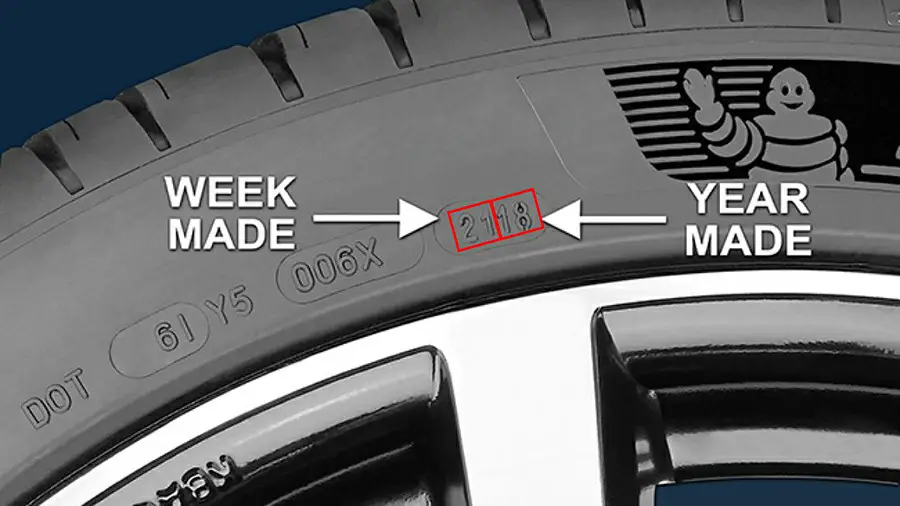 The pattern of such a tire is flatter to provide a wide contact patch with the roadway (see photo). Due to this, all tires for the summer season are less noisy and driving a car in such shoes is much more comfortable.
The pattern of such a tire is flatter to provide a wide contact patch with the roadway (see photo). Due to this, all tires for the summer season are less noisy and driving a car in such shoes is much more comfortable.
The most popular manufacturers offering excellent performance wheels are:
Summer sets are not marked with a special icon, unlike winter ones, which are marked with a snowflake. In the tire industry, an unspoken rule has been adopted - if the snowflake icon is absent, then the rubber is focused only on summer.
The designation of summer tires is not much different from the marking of winter tires. On the side, the tire dimension, date of manufacture, certification standards (the letter “e” or DOT), maximum load numbers and top speed are indicated.
Tire indexes sometimes contain additional indicators.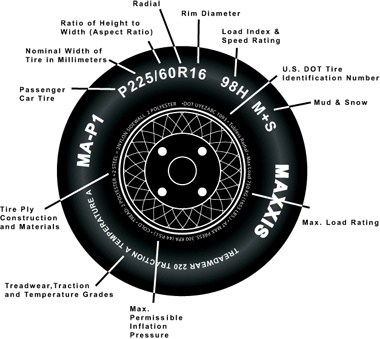 Such symbols convey information about the type of tube (TubeType or Tubeless), the number of layers of the breaker, the reinforced carcass, which increases the load per tire. Sometimes the design features of this tire (Outside), the direction of rotation, and other nuances are indicated.
Such symbols convey information about the type of tube (TubeType or Tubeless), the number of layers of the breaker, the reinforced carcass, which increases the load per tire. Sometimes the design features of this tire (Outside), the direction of rotation, and other nuances are indicated.
Winter tires and summer tires are marked in the same way. The differences are only in the information and the presence of a snowflake pattern. The name of the company and the brand of rubber should be applied along the outer radius. This is followed by the dimension of the wheel, taking into account the height of the profile r. Then the index of the maximum load on the tire, a letter that gives information about the maximum speed, is applied.
Information about the maximum pressure on the tire, the country of manufacture, symbols of compliance with GOST standards, details of the tire design are marked on the inside. For example, there may be colored labels. The presence of such an indicator as a yellow triangle indicates the lightest part of the rubber. When installing a new tire on a steel rim, the mark is aligned with the heaviest place to facilitate balancing.
The presence of such an indicator as a yellow triangle indicates the lightest part of the rubber. When installing a new tire on a steel rim, the mark is aligned with the heaviest place to facilitate balancing.
A red dot or triangle on board indicates the hardest spot. The light-alloy material from which the wheels are made is perfect for such kits. It is necessary to combine the L mark on the wheel with the red triangle on the rubber.
Sometimes there are colored stripes on the tread pattern. This is an internal brand name for a particular batch of rubber. It helps to quickly find the right kit for your car in the warehouse among different tire options, focusing on the applied color.
Additional icons include indexes of heat resistance, wet grip, rain pictograms, encrypted information of a specific manufacturer and batch and composition of rubber.
Next, we will consider the example and do its decoding. The name of the company and the tire model (GoodYear UltraGrip) are written on the outside. Next come the numbers 205*55*R17. In this form, the European marking is applied. The first number indicates the width of the profile, the second - about the height relative to the width, the third - indicates the landing diameter. The letter R indicates that we are talking about radial tires.
The name of the company and the tire model (GoodYear UltraGrip) are written on the outside. Next come the numbers 205*55*R17. In this form, the European marking is applied. The first number indicates the width of the profile, the second - about the height relative to the width, the third - indicates the landing diameter. The letter R indicates that we are talking about radial tires.
The American version of the designation may not differ from the European one - only letters corresponding to the car class will be added (P - passenger, LT - Lignht Track, T - Track). Or maybe another format, where all values are in inches. For example, an indicator of 30 * 11 * R17 indicates that we have a tire with an outer radius of 30 inches, a tread width of 11 and an inner radius of 17 inches.
Number 89H on the outside. These are indicators of load and speed. According to the terms of its marking, the wheel carries a load of up to 580 kg and a maximum speed of 200 km / h. There is also the inscription Reinforced.